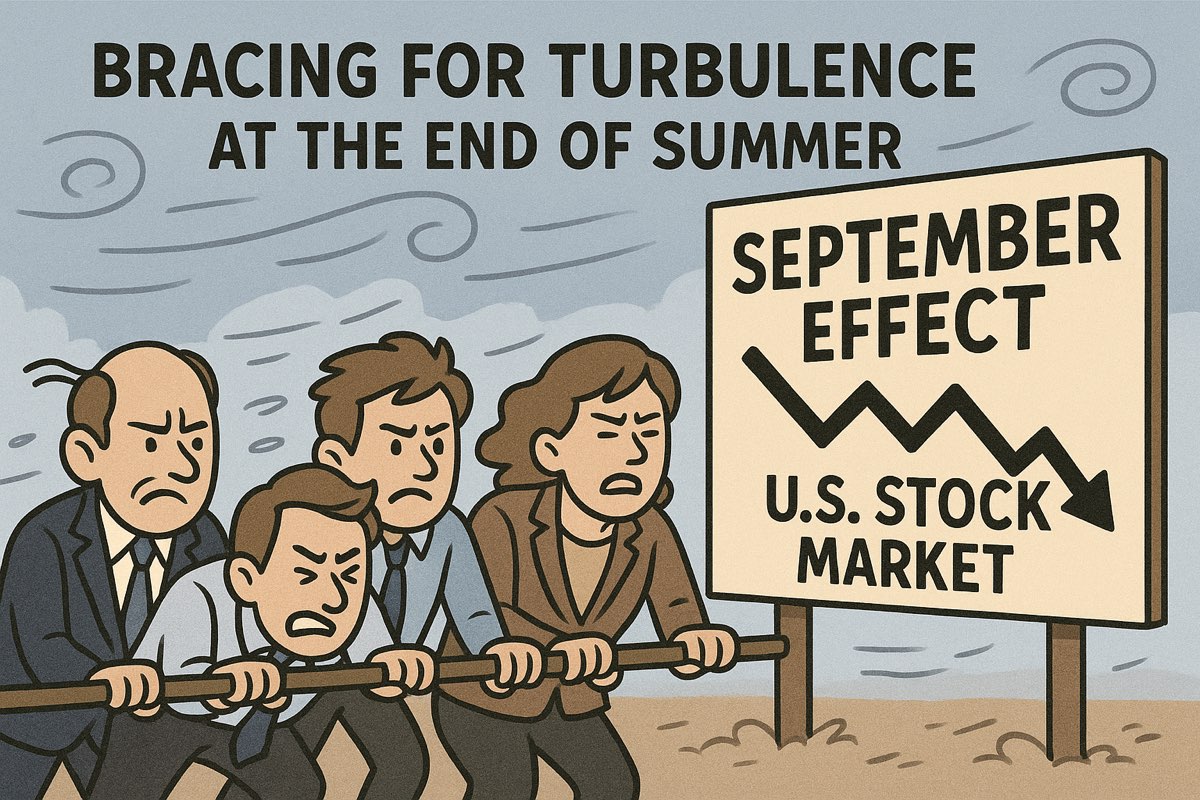The September Curse: Wall Street's Seasonal Specter Looms Again
As summer fades and traders return from the Hamptons, the calendar flips to September—a month that has long cast a shadow over the U.S. stock market. Investors nursing sunburns might soon face a diffe

As summer fades and traders return from the Hamptons, the calendar flips to September—a month that has long cast a shadow over the U.S. stock market. Investors nursing sunburns might soon face a different kind of sting: the infamous "September Effect," where equities historically underperform, often dipping into the red amid a cocktail of seasonal pressures and psychological jitters.
With the S&P 500 up nearly 10% year-to-date as of late August 2025, the question isn't just whether history will repeat, but how sharply it might bite in a year marked by AI euphoria, Federal Reserve pivots, and geopolitical crosswinds.
A Legacy of Late-Summer Slumps
Dig into the data, and September's reputation as the market's black sheep holds firm. Since 1928, the S&P 500 has posted negative returns in 55% of Septembers, averaging a 0.7% decline—far worse than any other month. The Dow Jones Industrial Average fares no better, logging losses in 68 of the past 96 Septembers. Even the tech-heavy Nasdaq, buoyed by modern growth stories, has averaged a 0.9% drop, while small caps via the Russell 2000 squeak by as only the second-worst performer with a 0.6% average dip.
This isn't mere coincidence. Major crashes have amplified the lore: the 1929 downturn kicked off in September, echoing through generations and fueling a self-fulfilling prophecy. More recently, events like the 2008 Lehman collapse and 9/11 struck in September, embedding the month in market psychology. Yet, anomalies exist—last year, defying the odds, the S&P 500 climbed 2%, the Nasdaq 2.7%, and the Dow 1.9%, marking gains in four of the past 10 Septembers. As inefficiencies get arbitraged away, some argue the curse is weakening, but the data still tilts bearish: over the last three decades, the S&P has shed 0.7% on average, with declines in four of the last five years.
The Mechanics Behind the Malaise
What turns September into a slog? It's a perfect storm of institutional behavior and economic rhythms. Fund managers, eyeing October fiscal year-ends, engage in "window dressing"—dumping laggards to polish portfolios for client reports. Quarterly rebalancing adds fuel, as pensions and ETFs shuffle holdings, often amplifying selling pressure. Tax-loss harvesting kicks in too, with investors offloading losers to offset gains before year-end.
Seasonal spending patterns exacerbate the drag. Summer vacations drain wallets, and back-to-school bills hit before holiday shopping ramps up, creating a consumer lull that ripples through corporate earnings. Behavioral biases play a role: traders returning from breaks reassess positions, often with a risk-off mindset, while corporate buyback blackouts limit support. Volatility spikes, with the VIX historically jumping, reflecting heightened uncertainty.
Defensive sectors like consumer staples, energy, health care, utilities, and communication services have historically held up best, while cyclicals take the brunt. But in today's AI-driven market, tech and consumer discretionary could buck the trend over the longer haul, even if they wobble short-term.
The 2025 Twist: Optimism Meets Obstacles
Heading into September 2025, the market's setup is tantalizingly mixed. The S&P 500 closed August up 1.9%, trading above its 200-day moving average—a combo that has historically yielded a 1.3% September gain when August ends positive. Year-to-date, major indexes are robust: Dow up 7.3%, S&P 9.9%, Nasdaq 11.3%, and Russell 2000 5.9%. AI tailwinds remain alive, with names like Nvidia and Palantir riding high on productivity promises for 2026-2027. The Fed's accommodative stance adds buoyancy: markets price in an 85% chance of a 25-basis-point cut at the September 16-17 FOMC meeting, potentially unleashing liquidity.
Bulls like those at Bank of America see resilience, forecasting the Nasdaq 100 hitting 28,000-29,000 by year-end—a 21-22% surge—fueled by AI shifting from hype to revenue. Earnings growth tracks 10% year-over-year for Q2 2025, and a positive August has preceded 3.2% September gains historically. If jobs data softens without cratering, the Fed's easing could spark a rally into Q4, aligning with the "Santa Claus Rally" setup.
Headwinds That Could Heighten the Hex
Yet, complacency abounds—the VIX hovers near four-year lows around 15.4, with overbought signals flashing (S&P RSI above 70). Tariffs loom large: U.S. levies on EU and Japan goods could crimp profits, with uncertainty over who absorbs the costs—suppliers, firms, or consumers. Sticky inflation (CPI at 2.5%) and a softening labor market (4.3% unemployment, weak payrolls) heighten recession odds at 40%. Geopolitical flares, from Middle East tensions to Fed makeup drama, could elevate volatility.
Analysts peg a 50-60% chance of a 5-10% correction, with some eyeing Fibonacci retracements for targets like Nvidia at $147. Elevated valuations (S&P at 34x P/E) and high bullish sentiment (bull/bear ratio 3.9) scream caution. If the September 5 jobs report disappoints or the Fed hesitates, a pullback to the 200-day MA could materialize.
Navigating the Noise: Strategies for September
For long-term investors, the curse is noise—volatility in one month shouldn't derail diversified plans. Dollar-cost averaging remains a smart entry tactic, smoothing risks amid dips. Watch for sell signals: breaches of the 50-day MA or hitting 20% profit targets from buy points. Advisors like those at Orion and Integrated Partners aren't tweaking portfolios, eyeing Q4 strength instead.
Traders might hedge, accumulating on retracements in resilient names, or pivot to defensives. But remember: September's bark often exceeds its bite, and with Fed cuts on tap, any weakness could set up a year-end melt-up. As one strategist quipped, the AI dream endures—don't fade it lightly. In this market, patience isn't just a virtue; it's profitable.
Disclaimer: The views in this article are from the original Creator and do not represent the views or position of Hawk Insight. The content of the article is for reference, communication and learning only, and does not constitute investment advice. If it involves copyright issues, please contact us for deletion.